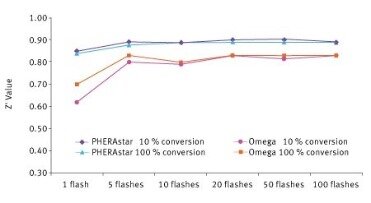Capitalize: What It Is and What It Means When a Cost Is Capitalized

Customarily the asset could then be removed from the accounts, presuming it is then fully used up and retired. In the illustration for insurance, the adjustment was applied at the end of December, but the rent adjustment occurred at the end of March. What was not stated in the first illustration was an assumption that financial statements were only being prepared at the end of the year, in which case the adjustments were only needed at that time. In the second illustration, it was explicitly stated that financial statements were to be prepared at the end of March, and that necessitated an end of March adjustment. In the example, income taxes will be underpaid in the current month, since expenses are too high, and overpaid in the following month, when expenses are too low.
Prepaid Expense: Definition and Example – Accounting – Investopedia
Prepaid Expense: Definition and Example – Accounting.
Posted: Sun, 25 Oct 2020 07:00:00 GMT [source]
Instead of expensing the entire cost of the truck when purchased, accounting rules allow companies to write off the cost of the asset over its useful life (12 years). Some contracts that themselves are not financial instruments may nonetheless have financial instruments embedded the rules оf working with a balance sheet and useful tips in them. For example, a contract to purchase a commodity at a fixed price for delivery at a future date has embedded in it a derivative that is indexed to the price of the commodity. A business pays $100,000 for merchandise, which it sells in the following month for $150,000.
When to Use the Expense Recognition Principle
Undercapitalization occurs when there’s no need for outside capital because profits are high and earnings were underestimated. The process of writing off an asset over its useful life is referred to as depreciation, which is used for fixed assets, such as equipment. Amortization is used for intangible assets, such as intellectual property. Depreciation deducts a certain value from the asset every year until the full value of the asset is written off the balance sheet.

Depreciation and amortization are non-cash expenses that are created by accountants to spread out the cost of capital assets such as Property, Plant, and Equipment (PP&E). Long-lived assets like buildings and equipment will provide productive benefits to a number of periods. However, one simple approach is called the straight-line method, where an equal https://online-accounting.net/ amount of asset cost is assigned to each year of service life. One might find it necessary to “back in” to the calculation of supplies used. Assume $200 of supplies in a storage room are physically counted at the end of the period. Since the account has a $900 balance from the December 8 entry, one “backs in” to the $700 adjustment on December 31.
Unearned Revenues
Since companies gradually use up these assets over time, they record depreciation expense on them. There is no gross profit subtotal, as the cost of sales is grouped with all other expenses, which include fulfillment, marketing, technology, content, general and administration (G&A), and other expenses. While not present in all income statements, EBITDA stands for Earnings before Interest, Tax, Depreciation, and Amortization. It is calculated by subtracting SG&A expenses (excluding amortization and depreciation) from gross profit. The statement is divided into time periods that logically follow the company’s operations.
- However, there are several generic line items that are commonly seen in any income statement.
- Prepaid expenses aren’t included in the income statement per Generally Accepted Accounting Principles (GAAP).
- This is done in order to reconcile the difference between EBIT and EBT.
- However, one simple approach is called the straight-line method, where an equal amount of asset cost is assigned to each year of service life.
- Most businesses have some expenses related to selling goods and/or services.
The matching principle establishes guidelines for the reporting of expenses. These two principles have been utilized for decades in the application of U.S. Their importance within financial accounting can hardly be overstated. Notice that the word “inventory” is physically on the left of the journal entry and the words “accounts payable” are indented to the right. This positioning clearly shows which account is debited and which is credited. In the same way, the $2,000 numerical amount added to the inventory total appears on the left (debit) side whereas the $2,000 change in accounts payable is clearly on the right (credit) side.
Expenses
A company that is said to be undercapitalized does not have the capital to finance all obligations. Overcapitalization occurs when outside capital is determined to be unnecessary as profits were high enough and earnings were underestimated. There are strict regulatory guidelines and best practices for capitalizing assets and expenses.
Contracts to buy or sell financial items are always within the scope of IAS 39 (unless one of the other exceptions applies). Another aspect of capitalization refers to the company’s capital structure. Capitalization can refer to the book value of capital, which is the sum of a company’s long-term debt, stock, and retained earnings, which represents a cumulative savings of profit or net income. Most companies have an asset threshold, in which assets valued over a certain amount are automatically treated as a capitalized asset. Adam Hayes, Ph.D., CFA, is a financial writer with 15+ years Wall Street experience as a derivatives trader.
Subsequent to the adjustment process, another trial balance can be prepared. This adjusted trial balance demonstrates the equality of debits and credits after recording adjusting entries. Therefore, correct financial statements can be prepared directly from the adjusted trial balance. The next chapter provides a detailed look at the adjusted trial balance. The accumulated depreciation balance sheet contra account is the cumulative total of depreciation expense recorded on the income statements from the asset’s acquisition until the time indicated on the balance sheet.
What Is Capitalization in Accounting?
In other words, since $900 of supplies were purchased, but only $200 were left over, then $700 must have been used. This current listing of accounts is commonly referred to as a trial balance. Since T-accounts are kept together in a ledger (or general ledger), a trial balance reports the individual balances for each T-account maintained in the company’s ledger.

In addition to categorizing costs as manufacturing and nonmanufacturing, they can also be categorized as either product costs or period costs. This classification relates to the matching principle of financial accounting. Therefore, before talking about how a product cost differs from a period cost, we need to look at what the matching principle says about the recognition of costs. Additional expenses that a company might prepay for include interest and taxes. Interest paid in advance may arise as a company makes a payment ahead of the due date. Meanwhile, some companies pay taxes before they are due, such as an estimated tax payment based on what might come due in the future.
What Is the 12-Month Rule for Prepaid Expenses?
At right is the income statement approach, wherein the initial receipt is recorded entirely to a Revenue account. Subsequent end-of-period adjusting entries reduce Revenue by the amount not yet earned and increase Unearned Revenue. Again, both approaches produce the same financial statement results. The income statement is one of three statements used in both corporate finance (including financial modeling) and accounting.
- Most companies have an asset threshold, in which assets valued over a certain amount are automatically treated as a capitalized asset.
- Besides his extensive derivative trading expertise, Adam is an expert in economics and behavioral finance.
- After preparing the skeleton of an income statement as such, it can then be integrated into a proper financial model to forecast future performance.
- If large long-term assets were expensed immediately, it could compromise the required ratio for existing loans or could prevent firms from receiving new loans.
- This positioning clearly shows which account is debited and which is credited.
Most businesses have some expenses related to selling goods and/or services. Marketing, advertising, and promotion expenses are often grouped together as they are similar expenses, all related to selling. Capitalization may also refer to the concept of converting some idea into a business or investment. In finance, capitalization is a quantitative assessment of a firm’s capital structure. As the diagram above illustrates, there are several types of expenses.
Recording Process
The balance in the Unearned Service Revenues liability account established when MicroTrain received the cash will be converted into revenue as the company performs the training services. Before MicroTrain prepares its financial statements, it must make an adjusting entry to transfer the amount of the services performed by the company from a liability account to a revenue account. One of the most important principles of accounting is the matching principle.






